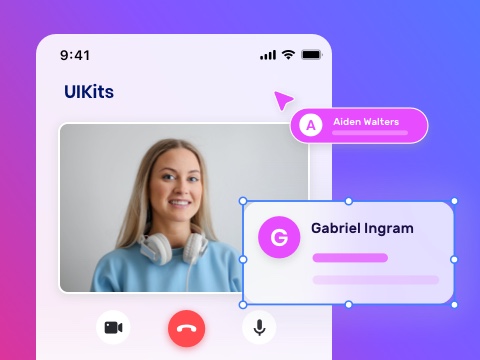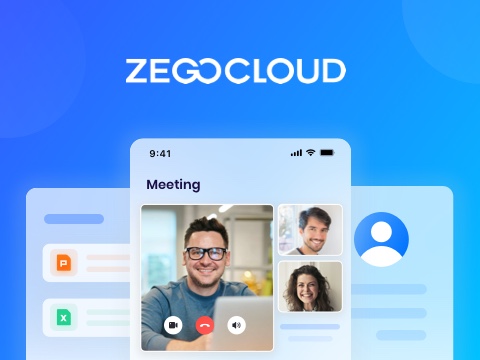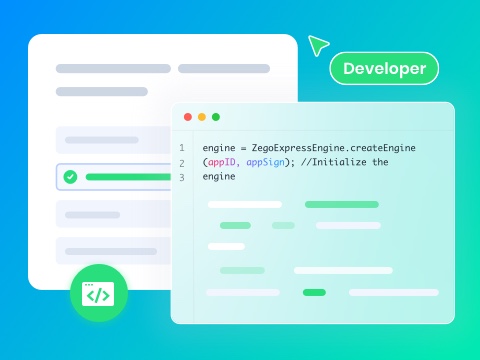Automatic Speech Recognition (ASR) is the invisible engine behind modern communication. It powers real-time captions, live translation, and voice agents across countless applications. However, its performance is notoriously fragile. In multilingual or noisy environments, ASR accuracy can plummet dramatically.
A single misinterpreted word in a business call can break trust. Garbled subtitles in a livestream can frustrate a global audience. These common failures highlight a critical challenge: background noise and linguistic diversity remain the twin villains of reliable speech-to-text.
This blog will deconstruct the technical hurdles that degrade ASR accuracy. We will outline a multi-layered strategy—from audio preprocessing to cloud-based AI—to achieve robust, real-time accuracy. Finally, we’ll show how integrated platforms like ZEGOCLOUD package these advanced solutions into accessible developer tools.
Why Noise and Multilingualism Destroy ASR Accuracy
Understanding the enemy is the first step to victory. The core challenges lie in two areas:
- The Impact of Environmental Noise: Background noise isn’t just annoying—it directly interferes with the audio quality that ASR systems rely on. Constant sounds like air conditioners or background chatter can mask key phonetic cues, making it harder for models to distinguish words. In far-field situations, such as video meetings or live streams, echo and reverberation further distort critical acoustic features (like MFCCs), leading to a much higher Word Error Rate (WER) and poor transcription accuracy.
- The Hurdles of Multilingual & Accented Speech: The world speaks in a beautiful but complicated tapestry of tongues. Traditional ASR systems, often trained in “standard” dialects, struggle with this diversity.
- Phonetic Inventory Variation: Different languages use entirely different sets of sounds.
- Accent and Dialect Diversity: Even within a single language, regional variations (e.g., Indian English vs. American English) can confuse models .
- Code-Switching: Users seamlessly switching between languages mid-sentence poses a significant challenge for monolithic models.
A Multi-Pronged Blueprint for Superior ASR Accuracy
Overcoming these challenges requires a defense-in-depth strategy, attacking the problem at multiple stages of the ASR pipeline.
Fortifying the Front-End: Signal Processing as the First Line of Defense
Before audio even reaches the recognition model, it must be cleaned. Modern approaches include:
- Advanced Noise Suppression & AI Echo Cancellation: Techniques that go beyond simple filtering are crucial. Solutions like ZEGOCLOUD’s are specifically optimized to remove environmental noise, distant speaker interference, and even challenging sounds like live stream gift sound effects and background music (BGM) that typically cause misrecognition .
- Beamforming with Microphone Arrays: Using algorithms like MVDR (Minimum Variance Distortionless Response) to focus an “acoustic spotlight” on the speaker and suppress noise from other directions .
- Lightweight Enhancement for Efficiency: Research into methods like frame resampling and sub-band pruning shows it’s possible to reduce the computational overhead of speech enhancement by over 66% without sacrificing performance, making high-quality processing feasible on more devices .
Building Smarter Models: AI and Architectures for Resilience
Cleaned audio is then passed to intelligent models designed for robustness.
- Robust Acoustic Models: Using modern architectures like Conformer that combine the local feature extraction of CNNs with the global context understanding of Transformers.
- Data Augmentation & Adversarial Training: Artificially creating a diverse set of training data by mixing clean speech with various noise types and simulating room reverberations. This teaches the model to generalize to unseen environments .
- Cross-Lingual and Multi-Modal Learning: Innovative approaches like the XLAVS-R model fuse audio with visual information (lip movements) to resolve ambiguities in noisy settings, reducing error rates by up to 18.5% . For language diversity, architectures like the Transformer Encoder Tree (TET) create hierarchical representations where linguistically similar languages share intermediate features, improving accuracy for low-resource languages .
The Power of Post-Processing: Refining the Output
The work isn’t done once the initial text is generated. LLM-based correction frameworks are now being applied with great success. For instance, the LIR-ASR framework uses a “Listening-Imagining-Refining” strategy inspired by human auditory perception to generate phonetic variants and refine them in context, achieving average reductions in Character Error Rate (CER) and WER.
| Feature | Traditional ASR | ZEGOCLOUD-powered ASR |
| Latency | Typically 2-3 seconds or more | ~600 ms |
| Accuracy in Noise | Struggles with noisy, overlapping speech | >40% improvement; optimized with AI noise cancellation |
| Multilingual Support | Often limited to major languages | 30+ languages and dialects |
| Cost Model | Charges for all processed audio | Pay-per-use; can save >50% |
| Integration | Complex setup and maintenance | Simple API & SDK integration |
Conclusion
Conquering ASR accuracy demands a complete, end-to-end strategy. This combines front-end audio enhancement with intelligent AI models. Smart configuration is also crucial.
The journey involves sophisticated techniques like beamforming and lightweight speech enhancement. Cross-lingual model training and LLM-powered correction are also key.
The trend is moving toward more adaptive and efficient solutions. The good news is you don’t have to build alone. Integrated cloud services like ZEGOCLOUD democratize access to powerful ASR. This lets developers focus on creating exceptional user experiences. They can forget the underlying infrastructure.
Ready to deliver accurate ASR in real-world conditions? Explore the ZEGOCLOUD Conversational AI solution today.
Let’s Build APP Together
Start building with real-time video, voice & chat SDK for apps today!










